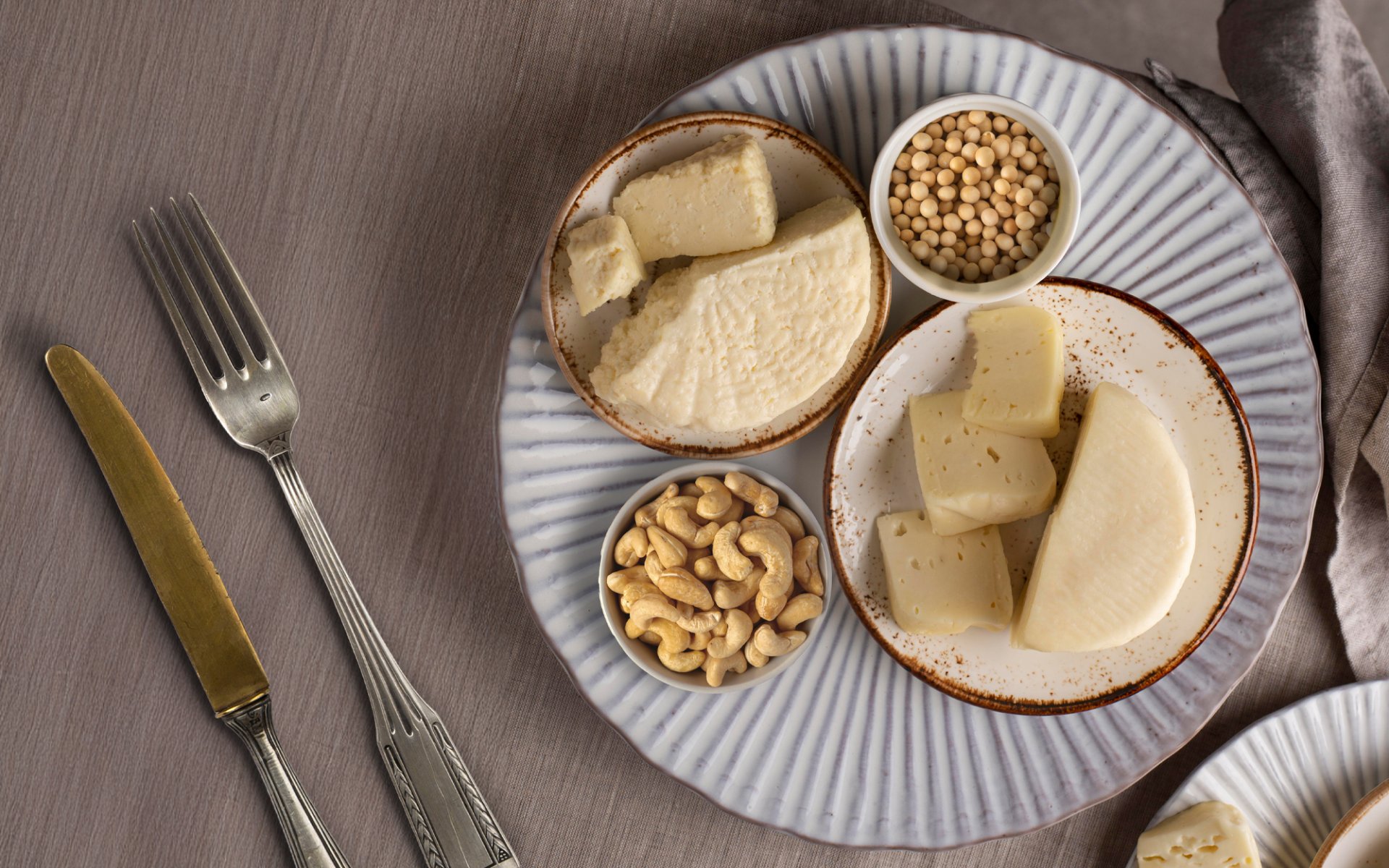Vegan Cheese

Vegan Cheese refers to cheese or dairy-free alternative products that contain no dairy or any animal-derived ingredients. Today, it can be produced to achieve flavors and textures increasingly similar to conventional cheese, and it comes in various types like traditional cheese. Besides being an option for vegans, it is also suitable for people with milk allergies or lactose intolerance.
Vegetarianism and Veganism: Ancient Concepts, Modern Relevance
Vegetarianism, or avoiding animal-derived ingredients, is not new; it has existed alongside the origins of various religions, beliefs, and philosophies worldwide. The oldest recorded vegetarian culture is the Indus Valley Civilization (3300 - 1300 BCE), as well as the 素 (Sù) culture of China, dating back to the Western Zhou Dynasty (1027 - 771 BCE), and the concept of abstinence from ensouled beings among philosophers or certain sects in ancient Greek civilization (600 BCE).
Veganism is a type of vegetarianism, representing the strictest approach to a vegetarian diet. In addition to abstaining from meat, it avoids all products, both consumed and used, that involve harming or disturbing other living beings. This includes foods like eggs, gelatin, honey, and milk. The modern vegan society officially began in 1945 and has since campaigned globally, expanding its community to the present day.
From Fermented Tofu to Early Vegan Cheese
When thinking of vegetarian food, one of the first protein options that comes to mind for many is tofu. Tofu originated in China over 2,000 years ago. The type of tofu considered the prototype of Vegan Cheese is Fermented tofu (Furu).
Fermented tofu has a history of production in China since the 16th century (1501-1600 CE). It is made from soybeans, rice wine, salt, and sesame oil or vinegar, offering a salty taste with a soft, creamy, yet firm texture. It is often consumed with congee or porridge and was disseminated to many Asian countries under China's influence.
The production of cheese from animal milk has a history dating back over 8,000 years BCE, coinciding with the era when people learned about animal husbandry. It existed in almost every civilization worldwide, from Mesopotamia, Tibet, to Africa, South Asia, and Europe. The culture of cheese consumption in Europe flourished in the 16th century as well, becoming one of Europe's most important foods before spreading to America. Today, cheese is a globally recognized food.
The Emergence and Evolution of Vegan Cheese in the Western World
Westerners first encountered fermented tofu around the 19th century, often served during meals when Western historical figures visited China or Japan. Upon tasting fermented tofu, they frequently remarked on its cheese-like taste and texture, informally referring to it as non-dairy or vegan cheese. It wasn't until 1878 that a Chinese company named Wo Sing & Co. was established in San Francisco, marking the first industrial production of fermented tofu in America. When introduced to Europe, the French called this salty tofu fromage de soja, literally meaning Soy Cheese.
In 1910, the first official production of Vegan Cheese began in France by Li Yu-ying, a political activist who had studied in France. He rigorously researched milk alternatives using tofu before establishing his own factory and introducing numerous new tofu products, including Soy Cheese. Later, Li also researched and produced Soy Cheese that mimicked famous cheese types like Gruyere, Roquefort, and Camembert.
Li's work later influenced the Western world and Asia. Efforts to create various forms of Vegan Cheese began in households. Finally, the first recipe for Vegan Cheese was published in 1940 in "The Home Guide to Everything for the Home" by Walter O. Lund. This recipe was for a Cheese Spread, with ingredients including soy flour, yeast, and water.
Attempts to produce Vegan Cheese based on the concept of fermented tofu by various tofu-producing companies continued to evolve. At that time, the products were not very similar to regular cheese, sometimes tasting like plastic or wax. However, the establishment of dedicated Vegan Cheese brands began after 1980, with various brands such as Tofutti, Follow Your Heart, and Soymage. Vegan Cheese in this era began to be produced using soy protein instead of direct soybeans like in older Soy Cheese. At this time, Vegan Cheese was an expensive product, sometimes twice the price of regular cheese. Nevertheless, more types of Vegan Cheese were produced, such as mozzarella or cheddar.
Vegan Cheese in the 21st Century: Diverse and Accessible Options
Entering the 21st century, alternative proteins were no longer limited to soy. Many other proteins are popular for producing Vegan Cheese, such as almonds, sesame, sunflower seeds, and currently, the most popular is cashew protein, due to its ability to create a creamy texture. These proteins are then combined with various plant fats like coconut oil and stabilized with plant-based or synthetic ingredients such as potato starch, rice flour, or carrageenan (a jelly made from red algae extract). Flavors are then added to provide a salty or tangy taste with ingredients like mustard powder, Nutritional Yeast, and cider or vinegar. Research into new alternative proteins for vegan cheese, such as corn protein, continues today.
Since 2018, there has been increasing awareness of vegan or cruelty-free products. In addition to large industrial brands, Vegan Cheese brands in the form of Start-ups or Artisan Cheese have proliferated. The price of Vegan Cheese has also become more accessible. Many people are now opting for plant-based products for reasons related to health, animal welfare awareness, environmental concerns, as well as the expansion of the Veganism and Vegetarian communities.


